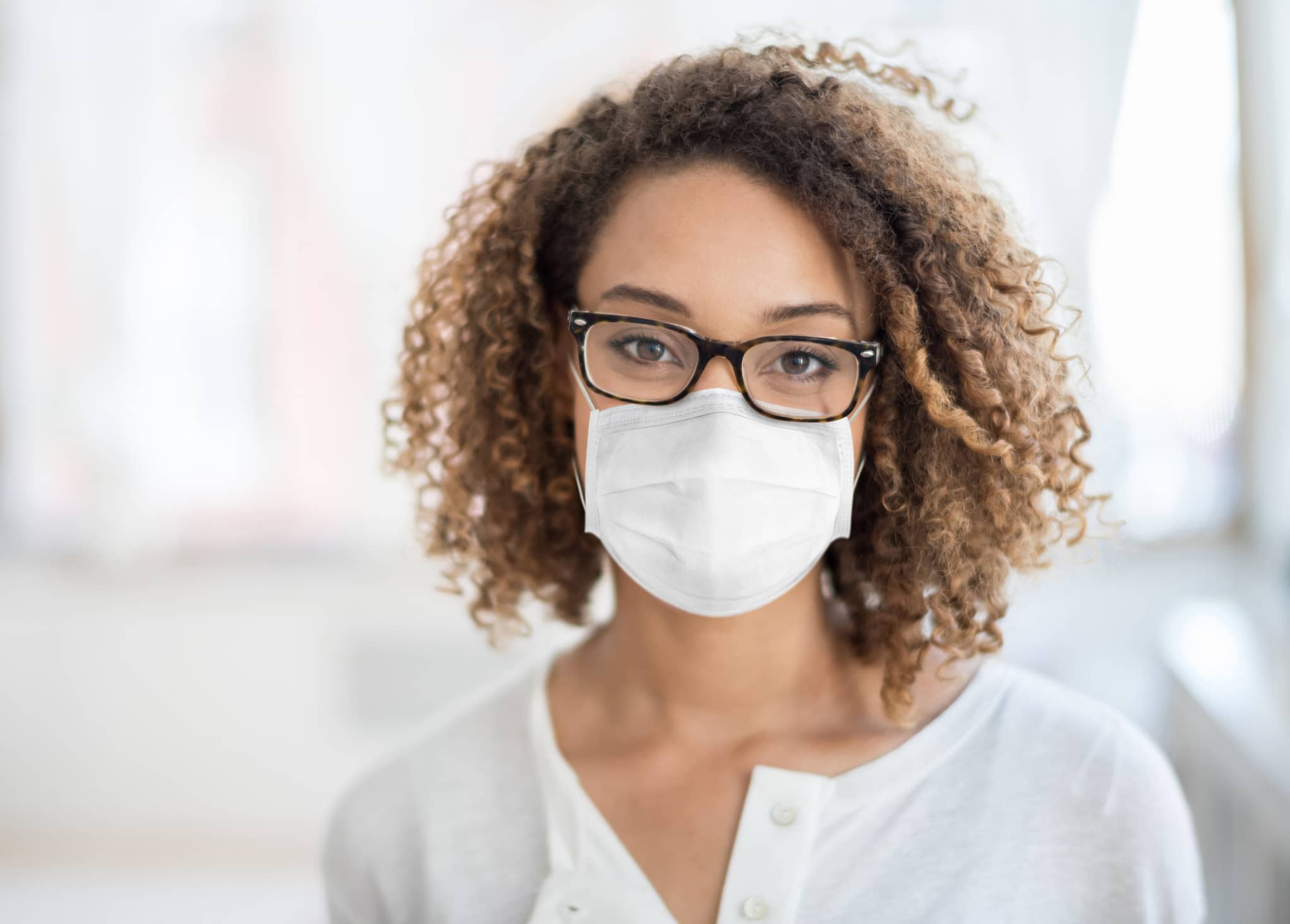
“Maskne.” It’s real, and it’s one of the biggest skin care topics on the internet now as people from all walks of life adjust to wearing masks in public. If you’re wearing a mask and getting breakouts as a result, you don’t have to consign yourself to your fate. There’s a lot you can do to keep the breakouts at bay, and the tips are simpler than you think.
The American Academy of Dermatologists has issued several guidelines for addressing mask-related acne, including:
Wash and moisturize your face daily.
This may seem like a no-brainer, but there are a surprising number of cleansing mistakes that can worsen your skin’s condition. In general, dermatologists recommend applying a gentle soap with lukewarm water, using your fingertips. Resist the urge to scrub, as this only irritates the skin. When choosing a soap, try to find one with ceramides, hyaluronic acid and dimethicone, which will help keep your skin exfoliated while producing a protective layer around the skin. If you have acne already or naturally oily skin, I would generally recommend a gel moisturizer. For normal or combination skin, I generally recommend lotions and for dry to very dry skin, creams.
Skip the makeup.
The more makeup you wear, the more you have to trap dirt and sweat in your pores. Consider eliminating makeup entirely, or focusing on the area that will be seen, such as your eyes. We recommend moisturizing your lips with petroleum jelly, to keep the mask from drying them out.
Skip irritating skin products.
When you have to wear a mask for prolonged periods, you may notice that the face products you’ve used successfully in the past now irritate your skin. For this reason, I usually recommend you stop using any lotion with salicylic acid that’s designed to be left on all day. I also recommend discontinuing retinoid creams and aftershave.
Wear the right mask and keep it clean.
Your mask should be snug fitting without digging in or rubbing. Cotton masks are better for your skin than synthetic ones, and if your skin is sensitive, the fabric touching your face should be soft. We generally recommend washing your mask after each use, in hot water with a fragrance-free soap, if your washing instructions will allow.
Avoid scrubs, peels and irritating skin treatments.
If you’re having a mask- related breakout, now is not the time to use acne treatments with salicylic acid, anti-aging products, at-home light devices, or any kind of peeling or deep exfoliating product. Wash, moisturize, and allow your skin to heal.
These are challenging times that we live in, and we must do everything we can to protect our health. Continue wearing your mask in public, isolating yourself for 15-minute mask breaks every four hours or so, just to let your skin breathe. With a little care and prevention, you can have healthy skin behind your mask!









